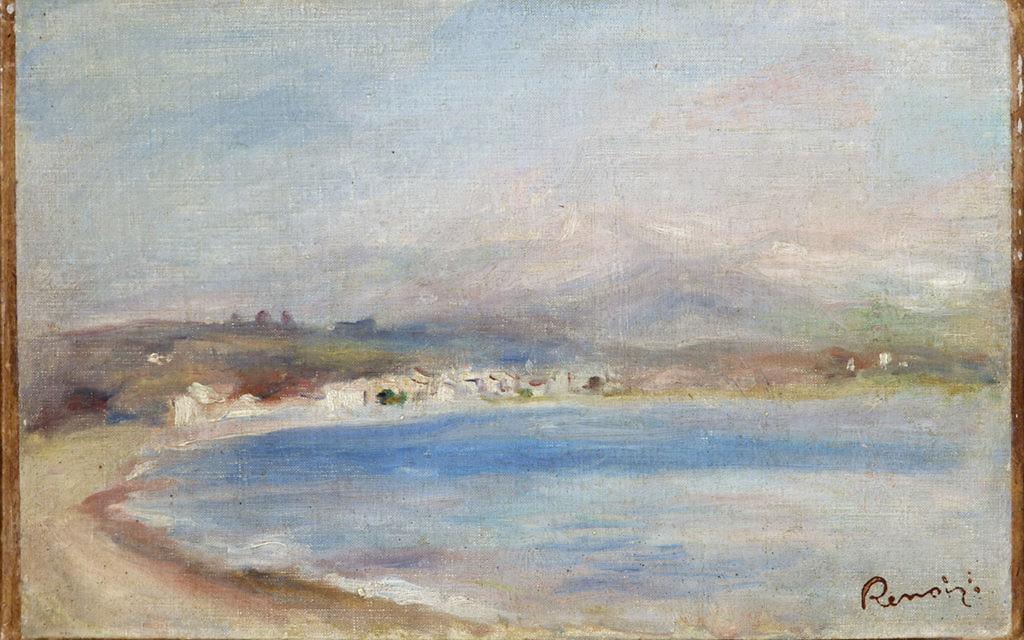Council can keep Renoir sold at Nazi-organised ‘Jew auction’


A Renoir painting sold at a Nazi-organised “Jew auction” does not have to be returned to the heirs of its previous owners, a report has found.
Bristol City Council also does not have to pay compensation to the family of Jakob and Rosa Oppenheimer over its possession of The Coast of Cagnes, the Spoliation Advisory Panel added.
The Oppenheimers owned the Margraf group, a fine art and jewellery dealership which was in possession of the painting, but were banned as directors by the Nazis in 1933 and lost ownership by 1937.
Get The Jewish News Daily Edition by email and never miss our top stories Free Sign Up
Documents state they fled from Germany to France to avoid arrest and the painting was later sold at a “Jew auction” in Berlin in 1935.
But the panel has rejected a claim on behalf of Margraf as it believes the artwork was sold because of a bank debt rather than any Nazi persecution the Oppenheimers were subjected to.
The panel, which considers claims over cultural objects lost during the Nazi era of 1933 to 1945 but which are now held by a UK museum or gallery, adds an Austrian Jewish man is thought to have brought the painting with him to Bristol in 1939.
Leopold Moller fled Hamburg from the Gestapo and later left the painting to the Friends of Bristol Art Gallery on his death in 1999, according to the report.
The item was then given to the council and remains on display in the French collection of the Bristol Museum and Art Gallery.
Mr Moller’s story of persecution by the Nazis and his escape with the painting has been used in the painting’s interpretation in the gallery although the council said it was unaware of its previous history, the report added.
It concludes: “In all the circumstances, the panel finds that the moral strength of Margraf’s claim is insufficient to justify a recommendation that the painting be transferred or that an ex-gratia payment be made.”
The document adds: “The fact that the painting formed part of the Margraf inventory, and indeed its sale in the 1935 Graupe auction, now forms an integral part of the painting’s provenance.
“Its acquisition by Mr Moller before he was forced to flee Nazi Germany in 1939 also forms part of that fabric and, without any obligation on the council, the panel considers it would be fitting to incorporate into the painting’s narrative history when displayed, the Oppenheimers’ connection with the painting such that it serves their memory as well as Mr Moller’s.”
A Bristol City Council spokesman said: “We have received the report of the Spoliation Advisory Panel and respect their recommendation.”

Thank you for helping to make Jewish News the leading source of news and opinion for the UK Jewish community. Today we're asking for your invaluable help to continue putting our community first in everything we do.
For as little as £5 a month you can help sustain the vital work we do in celebrating and standing up for Jewish life in Britain.
Jewish News holds our community together and keeps us connected. Like a synagogue, it’s where people turn to feel part of something bigger. It also proudly shows the rest of Britain the vibrancy and rich culture of modern Jewish life.
You can make a quick and easy one-off or monthly contribution of £5, £10, £20 or any other sum you’re comfortable with.
100% of your donation will help us continue celebrating our community, in all its dynamic diversity...
Engaging
Being a community platform means so much more than producing a newspaper and website. One of our proudest roles is media partnering with our invaluable charities to amplify the outstanding work they do to help us all.
Celebrating
There’s no shortage of oys in the world but Jewish News takes every opportunity to celebrate the joys too, through projects like Night of Heroes, 40 Under 40 and other compelling countdowns that make the community kvell with pride.
Pioneering
In the first collaboration between media outlets from different faiths, Jewish News worked with British Muslim TV and Church Times to produce a list of young activists leading the way on interfaith understanding.
Campaigning
Royal Mail issued a stamp honouring Holocaust hero Sir Nicholas Winton after a Jewish News campaign attracted more than 100,000 backers. Jewish Newsalso produces special editions of the paper highlighting pressing issues including mental health and Holocaust remembrance.
Easy access
In an age when news is readily accessible, Jewish News provides high-quality content free online and offline, removing any financial barriers to connecting people.
Voice of our community to wider society
The Jewish News team regularly appears on TV, radio and on the pages of the national press to comment on stories about the Jewish community. Easy access to the paper on the streets of London also means Jewish News provides an invaluable window into the community for the country at large.
We hope you agree all this is worth preserving.
-
By Laurent Vaughan - Senior Associate (Bishop & Sewell Solicitors)
-
By Laurent Vaughan - Senior Associate (Bishop & Sewell Solicitors)
-
By Laurent Vaughan - Senior Associate (Bishop & Sewell Solicitors)
-
By Laurent Vaughan - Senior Associate (Bishop & Sewell Solicitors)





















